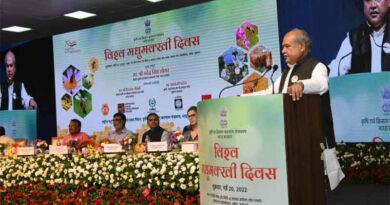Scottish crops could hold key to healing with honey
17 November 2022, UK: “The ability to identify these honey components opens the door to utilising Scottish crops such as heather for medical purposes. Further research would allow us to investigate the potential of other Scottish crops and isolate the most active components either from the honey or the original plant sources to use in wound-healing lotions or bandages”
This article first appeared in Farming Scotland magazine
The healing effects of Manuka honey are well established and widely recognised. The NHS even recommends Manuka Medihoney as an effective treatment for wounds and burns.
Manuka honey comes from New Zealand and Australia, and is made by bees that feed on Manuka flowers, a plant in the tea tree and myrtle family. However, in a collaboration that crosses the globe, researchers from The James Hutton Institute have been examining the medical potential of honeys made from other crops to act as anti-microbial agents to fight against super-bugs.
Recent studies by Dr Gordon McDougall, Head of Plant Biochemistry at the Institute and collaborators at Queen Margaret University and Nazarbayev University School of Medicine (NUSOM) in Kazakhstan have found that various honeys, including some originating from Scottish heathers, have the same anti-microbial activity as Manuka Medihoney.
By using the Hutton’s analytical know-how and studying the composition of honey made from a variety of crops, the researchers have been able to pinpoint specific components in honey responsible for these super-bug killing effects.
Dr McDougall said “The ability to identify these honey components opens the door to utilising Scottish crops such as heather for medical purposes. Further research would allow us to investigate the potential of other Scottish crops and isolate the most active components either from the honey or the original plant sources to use in wound-healing lotions or bandages.”
Over the course of the research, NUSOM and the Hutton also identified that the non-sugar components of the honeys protected the immune response of human skin cells. Dr Pauline McLoone, principal investigator, said “Paired with the anti-microbial properties of honeys, this effect on skin cells could promote wound healing and further the use of natural, honey-based products in medical care”.
Also Read: CropLife India appoints Durgesh C Sharma as the new Secretary General
(For Latest Agriculture News & Updates, follow Krishak Jagat on Google News)















